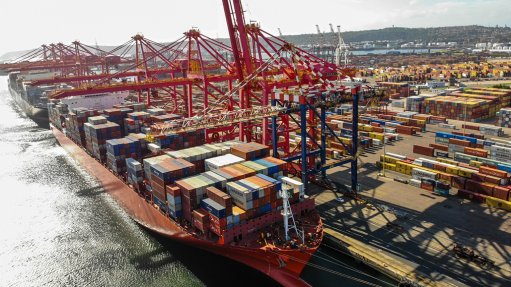Tackling Cholera At The Source
This article has been supplied by the author and has not been written or solicited by Creamer Media. It may be available only for a limited time on this website.
By Chetan Mistry, Strategy and Marketing Manager, Xylem Africa.
Cholera used to be a killer of epidemic proportions. In 1817, a cholera outbreak in India continued for almost a decade, killing hundreds of thousands of people. In the mid-1800s, over 15,000 people died from the disease in Saudi Arabia, and a massive outbreak in Russia during the same period would eventually claim over a million lives.
Even though cholera was partially identified more than 2,000 years ago, it began thriving in the modern era. Dense population levels and inadequate sanitation create colossal breeding grounds for the disease, a highly contagious bacteria that infects our small intestine with toxins.
Things started to change in the 20th century as municipal wastewater facilities and improved sewage systems made piped clean water a reality for most people. Today, we continue to bring that clean water to everyone because it helps eliminate dangerous diseases and improve people's lives.
So, it's saddening to see that cholera has reared its head again in South Africa and families are experiencing traumatic and painful loss of loved ones. This is a critical concern, and while it's crucial to hold authorities responsible for this dramatic step back in modern hygiene, that won't directly help those exposed to this disease.
How can South Africa reverse the Cholera outbreak and prevent it from reemerging? The answers lie with our wastewater treatment sites.
How to Fix Wastewater
South Africa's wastewater sites are in trouble. According to a 2022 report from the Department of Water & Sanitation, 105 out of 115 local wastewater treatment systems (over 80 percent) are in a critical state. These sites often discharge raw or partially untreated sewage into our river systems, exposing the most vulnerable and impoverished to polluted water.
Banishing this disease back to the previous century will take time and effort. But there are interventions at wastewater sites that can change the picture quickly. We can generally group these problems into six areas:
- Old infrastructure
- Complex management systems
- Loadshedding
- Depleted budgets
- Lack of skills
Community knowledge Old and ageing infrastructure, such as pumps and pipes, can severely limit a site's capacity, not to mention proper maintenance. Breakdowns lead to less capacity, creating a vicious cycle. Such legacy equipment can be revitalised with modern integrations, such as Internet of Things sensors or modernised with new age solutions\products geared for optimisation and greater monitoring and control, and ad-hoc hi-tech assessment solutions, such as sonic leak detection balls that identify problems long before they emerge.
Decentralised Treatment: Effluent is a key component for the spread of cholera therefore collecting and treating it quickly and efficiently will minimise the spread. Small package treatment plants can be used closer to the source of effluent to prevent further spreading. Furthermore, clean water can be treated with UV or Ozone or a combination of both e.g., tankers equipped with UV units will disinfect and therefore provide safe drinking water. Disinfection at the point of consumption will minimise further contaminations. The same principle can be applied to other water sources for example, rivers.
Complex management systems: Water and Wastewater treatment systems are complex and have many variables, making manual management very technical and challenging. Water data systems simplify management through historical data for trending and current data for real-time AI-enhanced analysis that delivers network optimisation, scenario planning and better decision making. These systems work on devices such as phones and tablets, and can send immediate alerts to authorities.
Loadshedding: Power is crucial to wastewater treatment sites. Loss of power causes devastating knock-on effects, including sewage spillages. Sites can invest in backup power solutions and reduce their energy reliance with more efficient equipment. For example, variable frequency drive pumps and new-generation aeration blowers reliably deliver energy savings of 60 percent and higher.
Depleted budgets: Money is tight, and improving water systems can be expensive. Yet there are some cost-effective interventions. Municipalities can increase revenue through improved metering systems coupled with automated meter readings and proactive condition assessments for detecting leaks and ensuring infrastructure integrity to reduce and prevent non-revenue water. Having a digital approach, municipalities can analyse historical data to discover efficiencies and avoid expensive repairs through preventative maintenance.
Lack of skills: Treating water is technical, and smaller sites, in particular, might struggle for access to enough experts. Water solutions partners can help provide those skills directly and pass knowledge to the site employees. Leading water solutions providers such as Xylem also fund university students' education, ensuring the next generation is ready to step up.
Community knowledge: Wastewater treatment sites are the primary defence against water-borne diseases. But communities can do a lot as well. On the macro scale, they can look after water areas such as rivers and wetlands, and help reduce pollution. On the micro level, they can make direct interventions such as washing hands, boiling water, and using chlorine tablets. It's imperative to work with local communities and share knowledge.
Cholera outbreaks are a symptom of failing wastewater treatment facilities, and the long-term solution is to turn these sites around. We can do this by combining modern innovations in water systems with experience and established infrastructure. South Africans deserve clean and safe water—let's work together to deliver this fundamental right.
Comments
Announcements
What's On
Subscribe to improve your user experience...
Option 1 (equivalent of R125 a month):
Receive a weekly copy of Creamer Media's Engineering News & Mining Weekly magazine
(print copy for those in South Africa and e-magazine for those outside of South Africa)
Receive daily email newsletters
Access to full search results
Access archive of magazine back copies
Access to Projects in Progress
Access to ONE Research Report of your choice in PDF format
Option 2 (equivalent of R375 a month):
All benefits from Option 1
PLUS
Access to Creamer Media's Research Channel Africa for ALL Research Reports, in PDF format, on various industrial and mining sectors
including Electricity; Water; Energy Transition; Hydrogen; Roads, Rail and Ports; Coal; Gold; Platinum; Battery Metals; etc.
Already a subscriber?
Forgotten your password?
Receive weekly copy of Creamer Media's Engineering News & Mining Weekly magazine (print copy for those in South Africa and e-magazine for those outside of South Africa)
➕
Recieve daily email newsletters
➕
Access to full search results
➕
Access archive of magazine back copies
➕
Access to Projects in Progress
➕
Access to ONE Research Report of your choice in PDF format
RESEARCH CHANNEL AFRICA
R4500 (equivalent of R375 a month)
SUBSCRIBEAll benefits from Option 1
➕
Access to Creamer Media's Research Channel Africa for ALL Research Reports on various industrial and mining sectors, in PDF format, including on:
Electricity
➕
Water
➕
Energy Transition
➕
Hydrogen
➕
Roads, Rail and Ports
➕
Coal
➕
Gold
➕
Platinum
➕
Battery Metals
➕
etc.
Receive all benefits from Option 1 or Option 2 delivered to numerous people at your company
➕
Multiple User names and Passwords for simultaneous log-ins
➕
Intranet integration access to all in your organisation


















